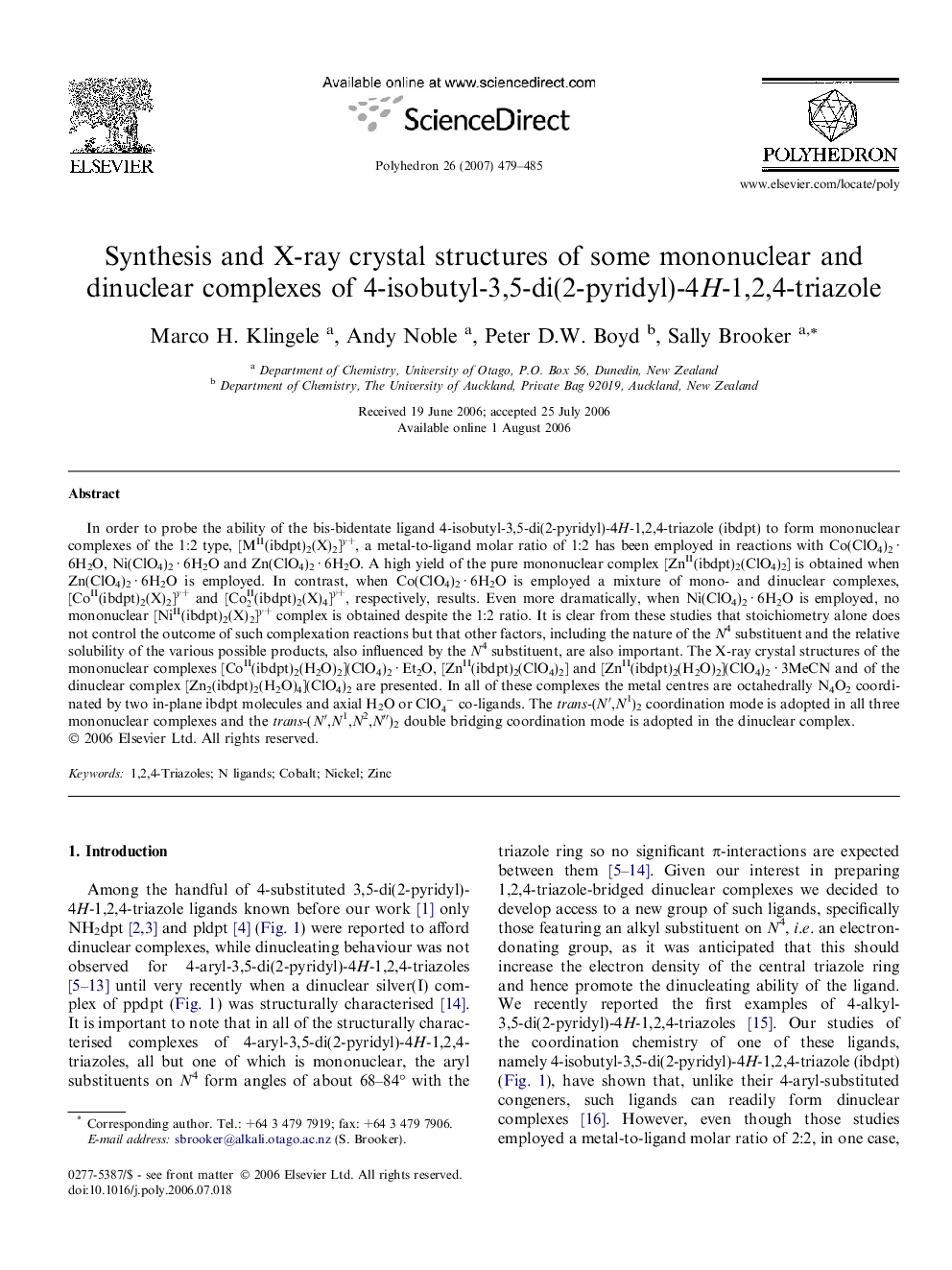| Article ID | Journal | Published Year | Pages | File Type |
|---|---|---|---|---|
| 1338872 | Polyhedron | 2007 | 7 Pages |
In order to probe the ability of the bis-bidentate ligand 4-isobutyl-3,5-di(2-pyridyl)-4H-1,2,4-triazole (ibdpt) to form mononuclear complexes of the 1:2 type, [MII(ibdpt)2(X)2]y+, a metal-to-ligand molar ratio of 1:2 has been employed in reactions with Co(ClO4)2 · 6H2O, Ni(ClO4)2 · 6H2O and Zn(ClO4)2 · 6H2O. A high yield of the pure mononuclear complex [ZnII(ibdpt)2(ClO4)2] is obtained when Zn(ClO4)2 · 6H2O is employed. In contrast, when Co(ClO4)2 · 6H2O is employed a mixture of mono- and dinuclear complexes, [CoII(ibdpt)2(X)2]y+ and [Co2II(ibdpt)2(X)4]y+, respectively, results. Even more dramatically, when Ni(ClO4)2 · 6H2O is employed, no mononuclear [NiII(ibdpt)2(X)2]y+ complex is obtained despite the 1:2 ratio. It is clear from these studies that stoichiometry alone does not control the outcome of such complexation reactions but that other factors, including the nature of the N4 substituent and the relative solubility of the various possible products, also influenced by the N4 substituent, are also important. The X-ray crystal structures of the mononuclear complexes [CoII(ibdpt)2(H2O)2](ClO4)2 · Et2O, [ZnII(ibdpt)2(ClO4)2] and [ZnII(ibdpt)2(H2O)2](ClO4)2 · 3MeCN and of the dinuclear complex [Zn2(ibdpt)2(H2O)4](ClO4)2 are presented. In all of these complexes the metal centres are octahedrally N4O2 coordinated by two in-plane ibdpt molecules and axial H2O or ClO4- co-ligands. The trans-(N′,N1)2 coordination mode is adopted in all three mononuclear complexes and the trans-(N′,N1,N2,N″)2 double bridging coordination mode is adopted in the dinuclear complex.
Graphical abstractControl of the metal-to-ligand molar ratio is insufficient to completely dictate the outcome of complexation reactions of bis-bidentate ligands such as 4-isobutyl-3,5-di(2-pyridyl)-4H-1,2,4-triazole (ibdpt). Here we show that despite employing a 1:2 molar ratio in some cases both mononuclear [MII(ibdpt)2(X)2]y+ and dinuclear [M2II(ibdpt)2(X)4]y+ complexes are obtained.Figure optionsDownload full-size imageDownload as PowerPoint slide
